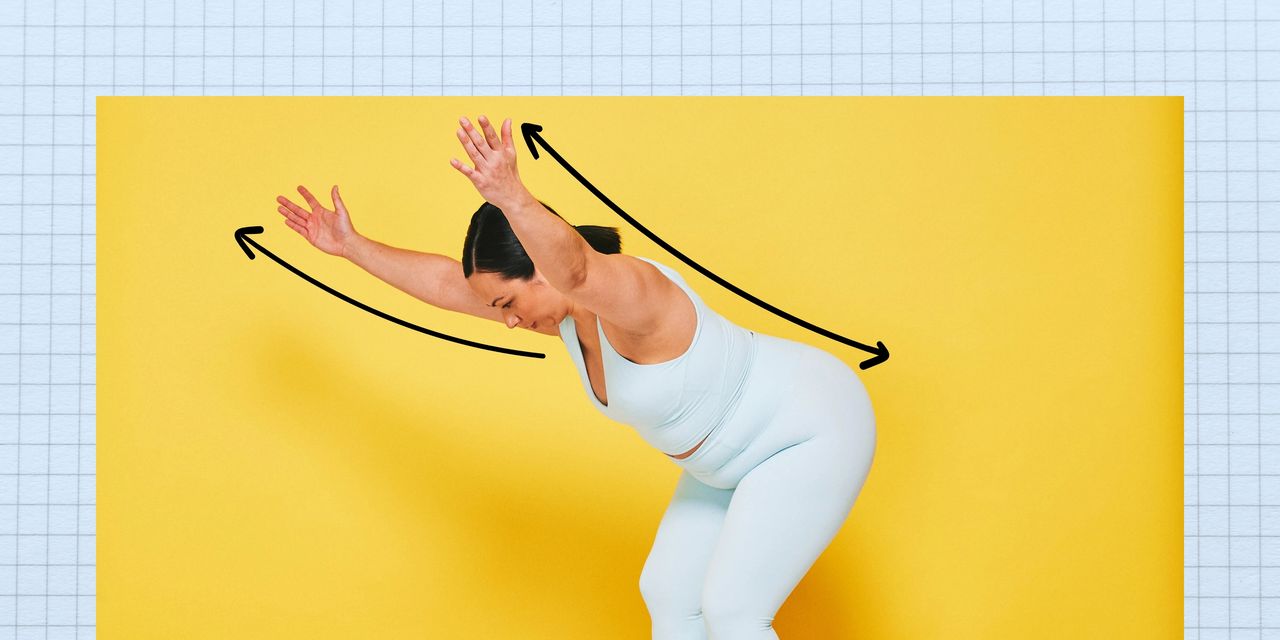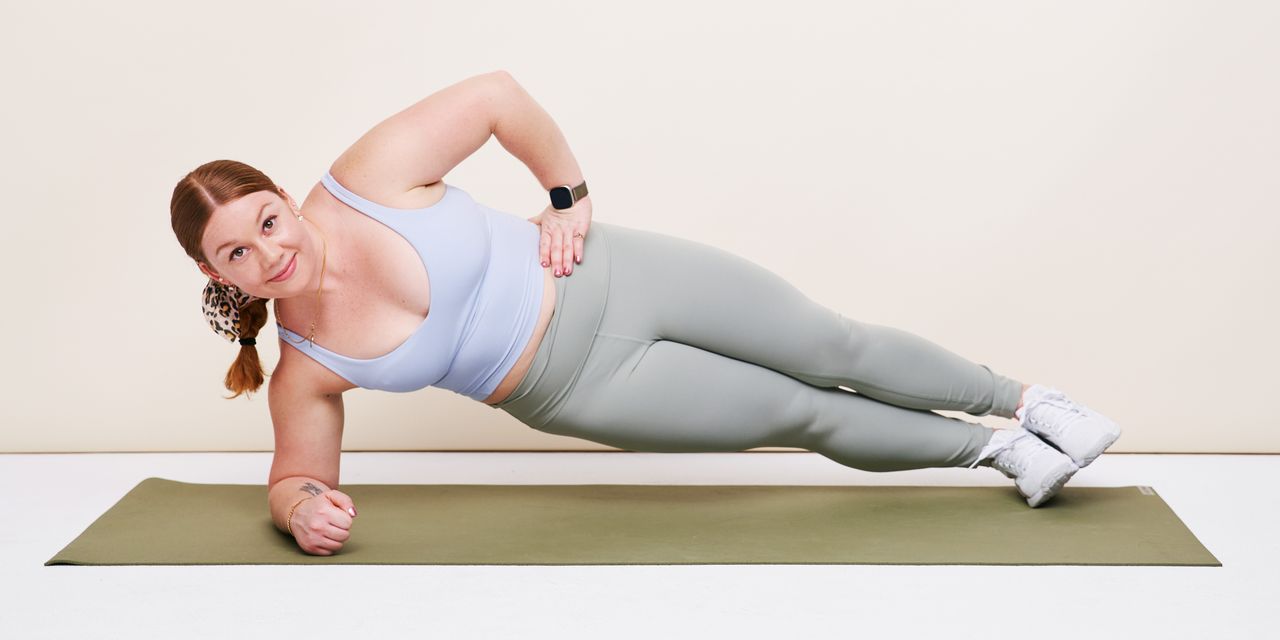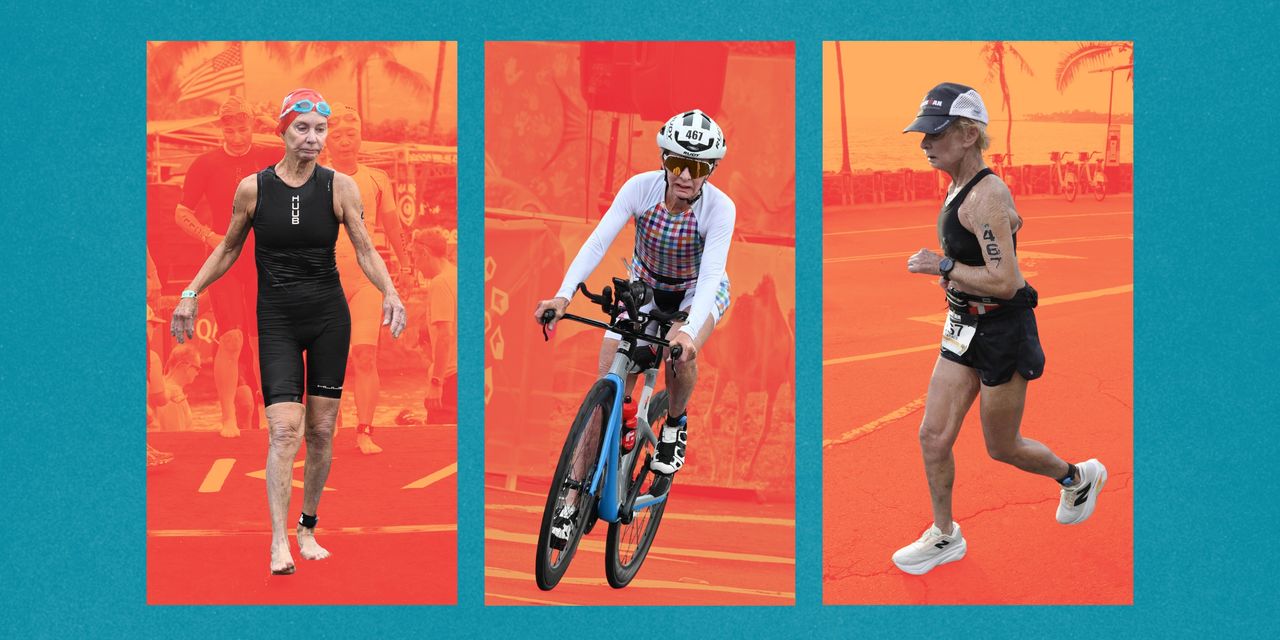This Bodyweight Strength Move Can Stop Your Shoulders From Hunching

For better posture, improved back health, and sturdier shoulders, start with the ABC’s…er, the I-Y-T’s. A common rehab move, the I-Y-T exercise is a beginner-friendly way to enhance your posture, nail down form for your bigger lifts, and bolster the overall functioning of your upper body.
The name is pretty darn descriptive: From a bent-over position, raise your arms straight up to form the I position. Then, bring them out to a 45 degree angle to create the Y. Lastly, hold them straight out to your sides to make the T. In between each letter, lower your arms down to your sides.
This move, which is often performed with just your bodyweight, is “one of my favorite exercises,” physical therapist Kellen Scantlebury, DPT, CSCS, founder of Fit Club NY, tells SELF. In fact, it should be a staple of more people’s routines, he says. For all the reasons why—and how to do the I-Y-T raise yourself—keep on reading.
What muscles does the I-Y-T exercise target?
This exercise homes in on the muscles that help control your shoulder blades and keep them in optimal positioning, Dr. Scantlebury says. Each letter works a slightly different area, though they all hit the middle and lower portions of your trapezius (traps), a diamond shaped muscle in your upper back that attaches to the shoulder blades, and also extends up into your neck. More specifically:
- I-raise: fires up your middle and lower traps.
- Y-raise: works your middle and lower traps, your rhomboids (another upper back muscle that attaches to the shoulder blades), and your rear deltoids (backs of your shoulders).
- T-raise: hits your middle and lower traps, rhomboids, and rear delts, though a little less intensely than the Y raise.
What are the benefits of I-Y-T raises?
The I-Y-T is a great accessory move to do to complement upper-body pushing and pulling exercises. That’s because it places your scapulae (a.k.a. shoulder blades) in the ideal positioning to complete these motions: It keeps them depressed (pulled down) and adducted (pulled in towards the center of your body), Dr. Scantlebury explains.
That’s important, since many people make the mistake—both in the gym and daily life—of shrugging their shoulders up to their ears, which overuses the upper traps and elevates the scapula. This places a ton of pressure on the shoulders, in particular on the rotator cuff muscles, which can get impinged (so, compressed or irritated) from that positioning.
Another common mistake people make is rounding their shoulders forward, which abducts the scapula (moves the shoulder blades apart from one another). That abduction overstretches and weakens the muscles that control the scapula, including the middle traps, lower traps, and rhomboids, which can lead to pain and increase injury risk in the upper back and shoulders. Plus, it’s just not ideal posture, since it has you hunching forward.
By engaging the rhomboids, middle and lower traps, through exercises like the I-Y-T raise, you can improve the strength of those muscles and create “better balance in your upper back, which then takes pressure off of your shoulders,” Dr. Scantlebury says. In turn, you’ll boost your posture, since it’ll be easier for you to comfortably stand (or sit) up tall.
Are I-Y-T raises just for rehab, or should I do them in my workout too?
If you associate this exercise with physical therapy, there’s a reason for that.
This move “gets a lot of publicity in rehab,” Dr. Scantlebury. And while it certainly has its benefits there, helping to address pain and other issues related to poor posture, it’s also a great one to include in a warm-up. Specifically, doing it before any workout involving overhead pressing, overhead reaching, pulling, or pushing is smart since it helps activate the muscles you need to do these motions correctly. “If we can fire them up with the I-Y-T raise before the workout, there’s less cueing that needs to take place during the workout,” Dr. Scantlebury explains. Basically, you’ll get more out of your workout since the right players will be all revved up and ready to go.
So what’s the best way to weave the I-Y-T raise into a warm-up? Dr. Scantlebury suggests doing three rounds of 10 to 15 reps. The GIF below shows one rep as one cycle through the I-Y-T pattern, but you can also split it up: Dr. Scantlebury suggests breaking out the letters and doing 10 reps of just the T positioning, followed by 10 reps of the Y, and then finishing with 10 reps of the I. That’s because T’s are the easiest of the three motions, Y’s are the second easiest, and I’s are the hardest. So starting out with T’s is a good way to get the muscles engaged before moving onto the more challenging variations.
If you’re new to the move, try it on the floor at first, lying on your stomach, since that positioning gives you a little more support, Dr. Scantlebury explains. (Here’s a visual demo.) The floor version can also be a good option if you’re dealing with issues like a sprained ankle or low back pain that make the standing version uncomfortable, he adds.
Begin with just your bodyweight. If you get to a point where that feels easy, you can up the ante by holding a light weight in each hand. Just be sure to keep them really light (think: just a pound or two). Go too heavy and you may inadvertently recruit your upper traps, which is opposite the goal.
How to do the I-Y-T raise
Ready to try this move for yourself? Scope the visual here, then follow along with step-by-step instructions below.
Katie Thompson
- Stand with your feet shoulder-width apart. With your core engaged, hinge forward slightly, keeping a slight bend in your knees.
- Bring your arms up straight, keeping them in line with your shoulders. This is the I part of the exercise. Bring your arms down.
- Bring your arms up straight and out at a 45-degree angle. This is the Y part of the exercise. Bring your arms down.
- Bring your arms directly out to the sides, bringing your shoulder blades together. This is the T part of the exercise. Bring your arms down. This is 1 rep.
Make sure you don’t use your upper traps when doing this exercise. Be careful not to shrug your shoulders up toward your ears, but instead focus on keeping space between them. Perform your reps at a slow, steady pace.
Demoing the move above is Amanda Ting, DPT, CSCS, a personal trainer at Mark Fisher Fitness in NYC.
Related:
- 9 Exercises for Knee Pain to Help You Move (and Feel!) Better
- 8 Rear Delt Exercises That’ll Help Improve Your Posture
- Why Are So Many Women Athletes Tearing Their ACLs Now?
Get more of SELF’s great fitness coverage delivered right to your inbox—for free.




